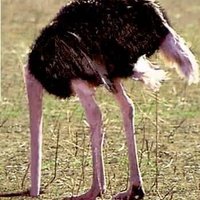Drafts by Bharath N . Krishnan

Preprints, 2025
I want to meaningfully average a pathalogical function (i.e., an everywhere surjective function w... more I want to meaningfully average a pathalogical function (i.e., an everywhere surjective function whose graph has zero Hausdorff measure in its dimension). In case this impossible, we wish to average a nowhere continuous function defined on the rationals. We do this taking satisfying expected values of chosen sequences of bounded functions converging to f which are both equivalent and finite. As of now, I'm unable to solve this due to limited knowledge of advanced math and most people are too busy to help. Therefore, I'm wondering if anyone knows a research paper which solves my doubts.
Unlike the previous paper, "Finding a Research Paper Which Meaningfully Averages Pathalogical Functions (V2)" we modified the equations, the theorems, the approach to solving theorems in the blockquote, and the leading question which solves the blockquote. We also deleted unnecessary definitions to make the paper less complicated.
ReserachGate, 2024
Suppose n ∈ N. We wish to meaningfully average 'sophisticated' unbounded sets (i.e., sets with po... more Suppose n ∈ N. We wish to meaningfully average 'sophisticated' unbounded sets (i.e., sets with positive n-d Hausdorff measure, in any n-d box of the n-d plane, where the measures don't equal the area of the boxes). We do this by taking the most generalized, satisfying extension of the expected value, w.r.t the Hausdorff measure in its dimension, on bounded sets which takes finite values only. As of now, I'm unable to solve this due to limited knowledge of advanced math and most people are too busy to help. Therefore, I'm wondering if anyone knows a research paper which solves my doubts. (Unlike previous versions with similar names, we add examples, motivations, and explanations to this version.)
ResearchGate, 2024
I want to meaningfully average a pathalogical function (i.e., an everywhere surjective function w... more I want to meaningfully average a pathalogical function (i.e., an everywhere surjective function whose graph has zero Hausdorff measure in its dimension). In case this impossible, we wish to average a nowhere continuous function defined on the rationals. We do this by taking the most generalized, satisfying extension of the expected value, w.r.t the Hausdorff measure in its dimension, on bounded functions with domains of finite measure, which takes finite values only. As of now, I'm unable to solve this due to limited knowledge of advanced math and most people are too busy to help. Therefore, I'm wondering if anyone knows a research paper which solves my doubts.
Unlike the previous paper, "Finding a Research Paper Which Meaningfully Averages Pathalogical Functions" [cit. 12]) we add motivations, examples, and change parts of the original paper.
Researchgate, 2024
(In this version, I added new examples, motivations, and clarified old definition.)
See the sa... more (In this version, I added new examples, motivations, and clarified old definition.)
See the same title in my profile without "v2".
ResearchGate, 2024
Suppose n ∈ N. We wish to meaningfully average 'sophisticated' unbounded sets (i.e., sets with po... more Suppose n ∈ N. We wish to meaningfully average 'sophisticated' unbounded sets (i.e., sets with positive n-d Hausdorff measure, in any n-d box of the n-d plane, where the measures don't equal the area of the boxes). We do this by taking the most generalized, satisfying extension of the expected value, w.r.t the Hausdorff measure in its dimension, on bounded sets which takes finite values only. As of now, I'm unable to solve this due to limited knowledge of advanced math and most people are too busy to help. Therefore, I'm wondering if anyone knows a research paper which solves my doubts.
ResearchGate, 2024
I want to meaningfully average a pathalogical function (i.e., an everywhere surjective function w... more I want to meaningfully average a pathalogical function (i.e., an everywhere surjective function whose graph has zero Hausdorff measure in its dimension). We do this by taking the most generalized, satisfying extension of the expected value, w.r.t the Hausdorff measure in its dimension, on bounded functions which takes finite values only. As of now, I'm unable to solve this due to limited knowledge of advanced math and most people are too busy to help. Therefore, I'm wondering if anyone knows a research paper which solves my doubts.
Papers by Bharath N . Krishnan
Suppose (X, d) is a metric space and E ⊆ X. Let h : R + 0 → R + 0 be an (exact) dimension functio... more Suppose (X, d) is a metric space and E ⊆ X. Let h : R + 0 → R + 0 be an (exact) dimension function (or gauge function) which is monotonically increasing, strictly positive, and right continuous [11]. If
Suppose (X, d) is a metric space and E ⊆ X. Let h : R + 0 → R + 0 be an (exact) dimension functio... more Suppose (X, d) is a metric space and E ⊆ X. Let h : R + 0 → R + 0 be an (exact) dimension function (or gauge function) which is monotonically increasing, strictly positive, and right continuous [12]. If

Suppose for n∈ ℕ, set A⊆ℝⁿ and function f∶A→ ℝⁿ. If set A, using the Hausdorff outer measure, is ... more Suppose for n∈ ℕ, set A⊆ℝⁿ and function f∶A→ ℝⁿ. If set A, using the Hausdorff outer measure, is measurable in the sense of Carathèodory; we want to find an extension of the expected value, w.r.t the Hausdorff measure, that's unique, finite and "natural"; (defined on §2.3 & §2.4) for all f in a prevalent subset of ℝᴬ. The issue is current extensions of the expected value are finite for all functions in only a shy subset of ℝᴬ. The reason this issue wasn't resolved is mathematicians have not thought of the problem, focusing on application rather than generalization. Despite the lack of potential use, we'll attempt to solve the problem by defining a choice function---this shall choose a unique set of equivalent sequences of sets (Fₖ***) , where the set-theoretic limit of Fₖ*** is the graph of f; the measure Hʰ is the ℎ-Hausdorff measure, such for each k∈ℕ, 0<Hʰ(Fₖ***)<+∞; and (fₖ*) is a sequence of functions where {(x1,...,xn,fₖ*(x1,...,xn))∶(x1,...,xn)∈ dom(Fₖ***)}=Fₖ***. Thus, the extended expected value of or E**[f,Fₖ***] is: ∀(ε>0)∃(N∈ℕ)∀(k∈N)(k≥N⇒1/Hʰ(dom(Fₖ***))∫dom(Fₖ*** )fₖ* dHʰ - E**[f,Fₖ***]<ε ) which should be unique, finite, and "natural" (defined on §2.3 & §2.4) for all f in a prevalent subset of ℝᴬ. Note we guessed the choice function using computer programming but we don’t use mathematical proofs due to the lack of expertise in the subject matter. Despite this, the biggest use of this research is the extension of the expected value is finite for "almost all" functions: this is easier to use in application when finding the "average" of functions covering an infinite expanse of space.
Suppose set R is a subset of [0,1] x [0,1]. We want to define a measure of uniformity of R in the... more Suppose set R is a subset of [0,1] x [0,1]. We want to define a measure of uniformity of R in the unit square using dimension d in [0,2]$ of the d-dimensional Hausdorff measure. Inorder to understand uniformity, we'll give examples in section 0 where points of R are uniform in [0,1] x [0,1]. Next in section 1, we will define preliminary definitions (e.g. Hausdorff &amp; Counting measure) to define a uniformity of measurable subsets of the unit square. Finally, in section 2 we will define a measure of uniformity between 0 and 1 w.r.t a uniform R with Hausdorff-dimension d. (In this case, the larger the measure of uniformity, the smaller the non-uniformity w.r.t to uniform R)
I want to find methods that compute a unique, satisfying average for functions defined on non-fra... more I want to find methods that compute a unique, satisfying average for functions defined on non-fractal, measurable sets in the sense of Carathedory which have no gauge function (or dimension function).






Uploads
Drafts by Bharath N . Krishnan
Unlike the previous paper, "Finding a Research Paper Which Meaningfully Averages Pathalogical Functions (V2)" we modified the equations, the theorems, the approach to solving theorems in the blockquote, and the leading question which solves the blockquote. We also deleted unnecessary definitions to make the paper less complicated.
Unlike the previous paper, "Finding a Research Paper Which Meaningfully Averages Pathalogical Functions" [cit. 12]) we add motivations, examples, and change parts of the original paper.
See the same title in my profile without "v2".
Papers by Bharath N . Krishnan
Unlike the previous paper, "Finding a Research Paper Which Meaningfully Averages Pathalogical Functions (V2)" we modified the equations, the theorems, the approach to solving theorems in the blockquote, and the leading question which solves the blockquote. We also deleted unnecessary definitions to make the paper less complicated.
Unlike the previous paper, "Finding a Research Paper Which Meaningfully Averages Pathalogical Functions" [cit. 12]) we add motivations, examples, and change parts of the original paper.
See the same title in my profile without "v2".